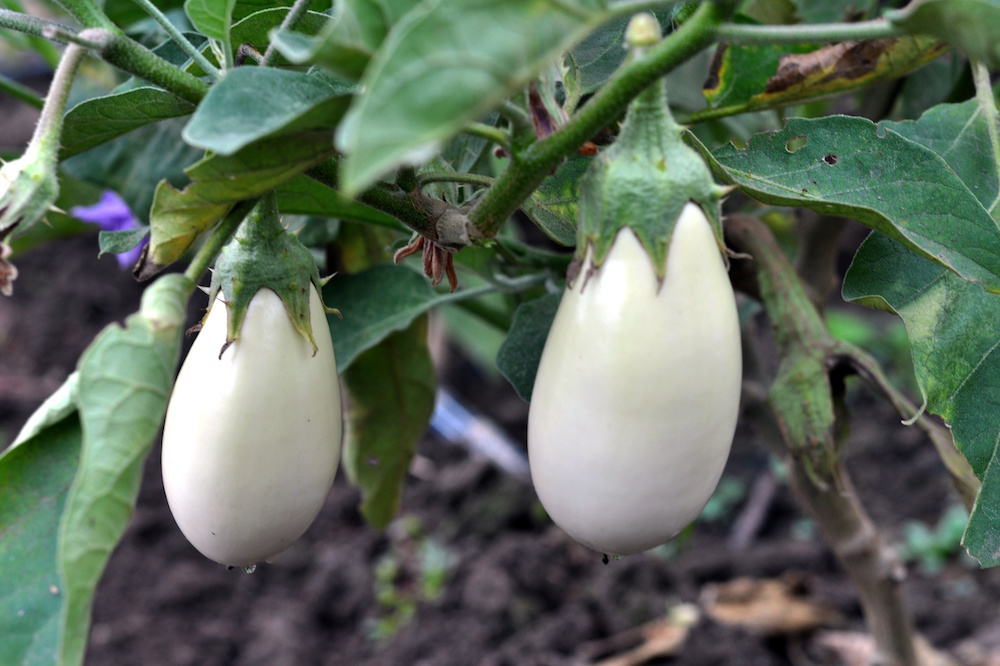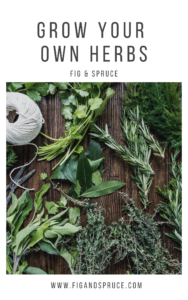Finding the best eggplant for container gardening is easy with the multiple varieties available.
There’s no doubt eggplant is one of the most versatile ingredients that you can add to any dish.
Having your ready-to-eat plants can be a significant upgrade to your existing gardening setup.
Table of Contents
Our Top Eggplant Varieties for Container Gardening
One of the main reasons you might consider container gardening is a space-saving household project.
With that said, you’ll want to find plants that can fit into smaller pots with ease, making them simple to maintain.
Plus, mini eggplants can be a fantastic contribution to your garden since they’re flavorful, versatile, and beautiful while blooming.
Patio Baby
By far, the most popular mini eggplant species grown in containers are patio baby eggplants.
They have a brilliant purple coloring that’s sure to impress, especially when put into vibrant dishes.
What makes this species so iconic is that it grows well in gardens, on patios, and even on balconies.
It’s one of the few true miniature varieties that maintain its proportions as it grows.
It also has a thinner skin, allowing you to easily prepare it in several ways, whether roasting or grilling.
On average, patio baby eggplants can grow up to three inches, and the total plant space should be approximately 24” at most.
Patio Baby Growing Information
- Soil Conditions: Grown in well-drained, fertile soil maintained between 6.2 and 6.8 pH.
- Growing Temperatures: From 80 to 90 degrees Fahrenheit while sowing, 70 degrees Fahrenheit while growing.
- Temperature Resistance: Best grown during late spring and early summer once the weather has settled.
- Staking: Ensure you use stakes to keep the fruits straight while growing.
- Pest Control: Flea beetles and potato beetles are prone to invest in eggplants but can be avoided using fabric row covers.
- Harvesting: When ready, simply clip the eggplant stem with shears and pick fruits of your desired size to boost regular production.
Hansel
Hansel eggplants are another popular container-grown variety because they’re a very compact plant.
They’ll produce slightly larger eggplants than patio baby varieties, typically measuring over four inches.
One of their most significant benefits is they’re easy to care for and maintain a smaller shape while growing.
If you’re looking for a longer, rather than rotund, type of eggplant, hansel is a great variety to consider.
It tastes delicious in many meals ranging from grilled vegetables to pizza.
Hansel Growing Information
- Soil Conditions: Hansel requires well-drained, fertile soil maintained between 6.2 and 6.8 pH.
- Growing Temperatures: When sowing, maintain soil temperatures between 80 and 90 degrees Fahrenheit. While growing, maintain a soil temperature of 70 degrees Fahrenheit.
- Temperature Resistance: Hansel seeds do not germinate in cool soil and best planted in late spring and early summer.
- Staking: Like other eggplant varieties, these fruits need to be staked and pruned to keep the plants straight.
- Pest Control: To avoid flea beetles and potato beetles, use fabric row covers for pest control.
- Harvesting: When harvesting your plants, clip the fruit stem with shears so more fruits can reproduce.

Gretel
If you want to add a little unique ornamental flavor to your garden, gretel eggplants are a great mini variety.
It has a similar shape to hansel plants, as its name suggests.
The striking difference is that these eggplants are white rather than the typical deep blue hue.
Gretel eggplants are primarily known for the number of fruits they produce annually.
They’re one of the more productive eggplant varieties to consider, and they can grow up to four inches long.
It’s important to account for space with these plants, though they are smaller than average-sized eggplants.
An average gretel plant can grow up to 36” tall, easily managed by staking the stem.
The growing recommendations for this plant are identical to hansel varieties.
Gretel Growing Information
- Soil Conditions: Always plant gretel eggplants in well-drained, fertile soil with a pH between 6.2 and 6.8.
- Growing Temperatures: These eggplants thrive in 70 degrees Fahrenheit when growing and in 80- to 90-degree soil while sowing.
- Temperature Resistance: Like other eggplants, this plant is best suited for early spring and summer as it is tender.
- Staking: As the plants can grow to 36” in height, staking is necessary to keep the fruits straight.
- Pest Control: Ensure you use fabric row covers to prevent the likelihood of pest infestations while also checking leaves for pest eggs.
- Harvesting: When it comes time for harvesting your eggplant, simply clip the fruit from the stem.
Fairy Tale
If space is a considerable concern in your garden, fairy tale eggplants are another great option to have.
They’re well-known for their smaller size, even smaller than standard hansel and gretel varieties.
Their ornamental coloring also makes them an outstanding contribution to your vibrant garden.
Instead of being plain white or purple, fairy tale eggplants are purple and white striped.
Their primary coloring is a deep purple with tiny streaks of white throughout.
Also, their flavor profile is quite unique, as they produce few seeds and have a wonderful, hearty flavor.
On average, fairy tale eggplants can take up to 65 days to fully mature and have an annual life cycle.
Harvesting is also unique, as the plant produces an ample number of fruits that you can harvest in clusters.
With that said, their growing recommendations are similar to that of other mini eggplant species.
Fairy Tale Growing Information
- Soil Conditions: Well-drained, fertile soil is best for these eggplants, and a pH of 6.2 to 6.8 is recommended.
- Growing Temperatures: Always grow your eggplants in warm temperatures (70 degrees Fahrenheit) for the highest yield.
- Temperature Resistance: Since these fruits are tender, they aren’t resistant to cold, so they’re best planted in spring and summer.
- Staking: Fairy tale eggplants grow up to 24” in height, so staking is a good idea to keep the fruits straight.
- Pest Control: Preventing potato beetles and flea beetles is vital for this species.
- Harvesting: When harvesting your eggplants, clip the fruit from the stem using shears to encourage fruit production.
Japanese Eggplant
At first glance, it’s easy to tell Japanese eggplant apart from the rest because of its glossy skin.
It’s also known to have a significantly darker purple coloring, thanks to its incredible sweetness.
Another notable feature of this variety is its creaminess, which is exceptional when appropriately prepared.
Japanese eggplants work perfectly in stir fries, especially since they don’t need to be peeled with thin skin.
Also, they’ll melt in your mouth when slow-cooked.
Japanese Eggplant Growing Information
- Soil Conditions: Soil must be well-drained with a soil acidity between 6.0 and 6.5 pH.
- Growing Temperatures: For optimal growth, Japanese eggplants need soil at a minimum of 50 degrees at night and 75 degrees during the day.
- Temperature Resistance: This variety is not resistant to freezing temperatures or frost, so growing it in spring and summer is ideal.
- Staking: Staking is a great way to secure the plants when they begin growing, as these eggplants are relatively heavy.
- Pest Control: Ensure that you inspect the underside of the plants for signs of pest infestation.
- Harvesting: When harvesting, clip the fruit from the stem using shears for a clean and precise cut.
Best Eggplant for Container Gardening: Final Thoughts
With the best eggplant for container gardening like Japanese varieties or mini species, the fruit is easy to grow in containers.
With adequate soil drainage, access to warm temperatures, and staking, you’ll have high yields to put to good use.

